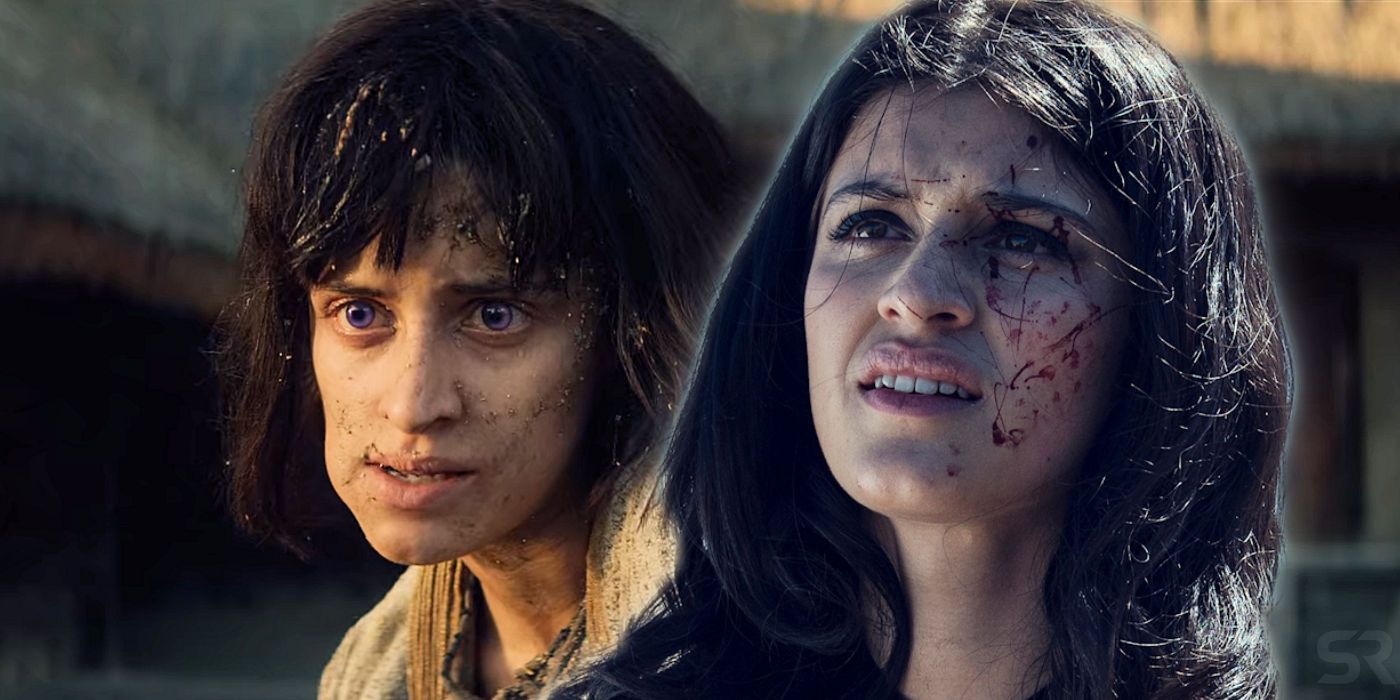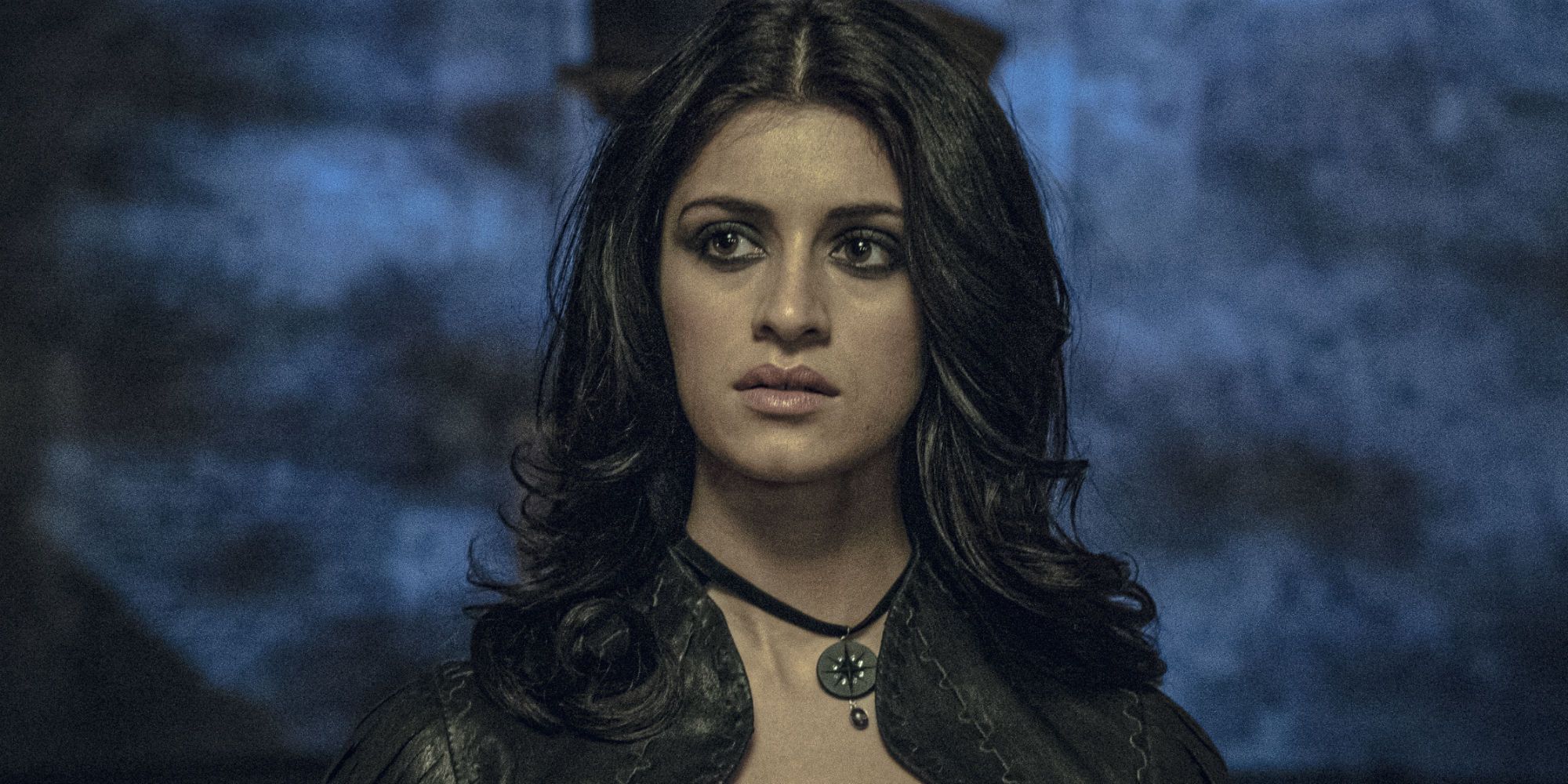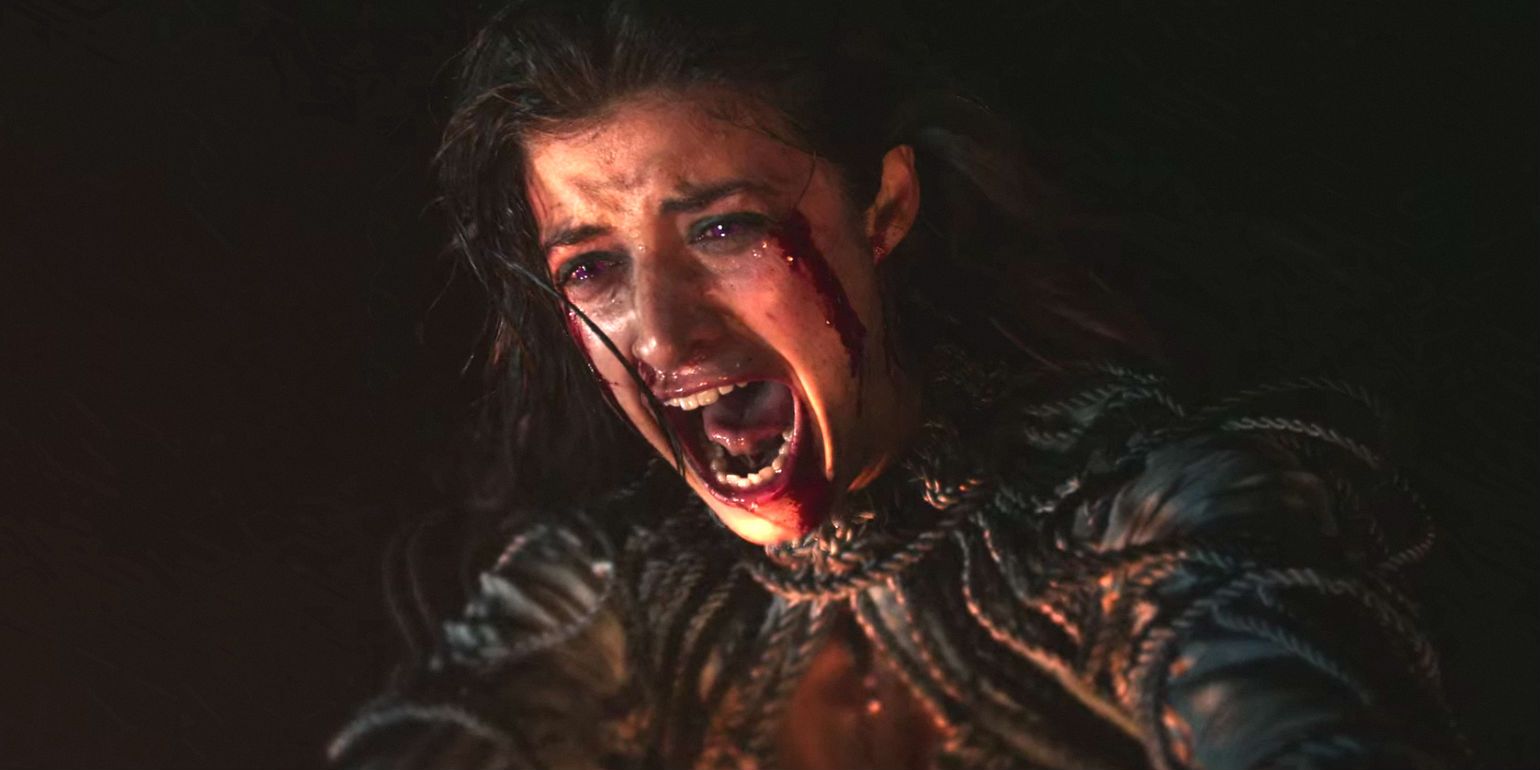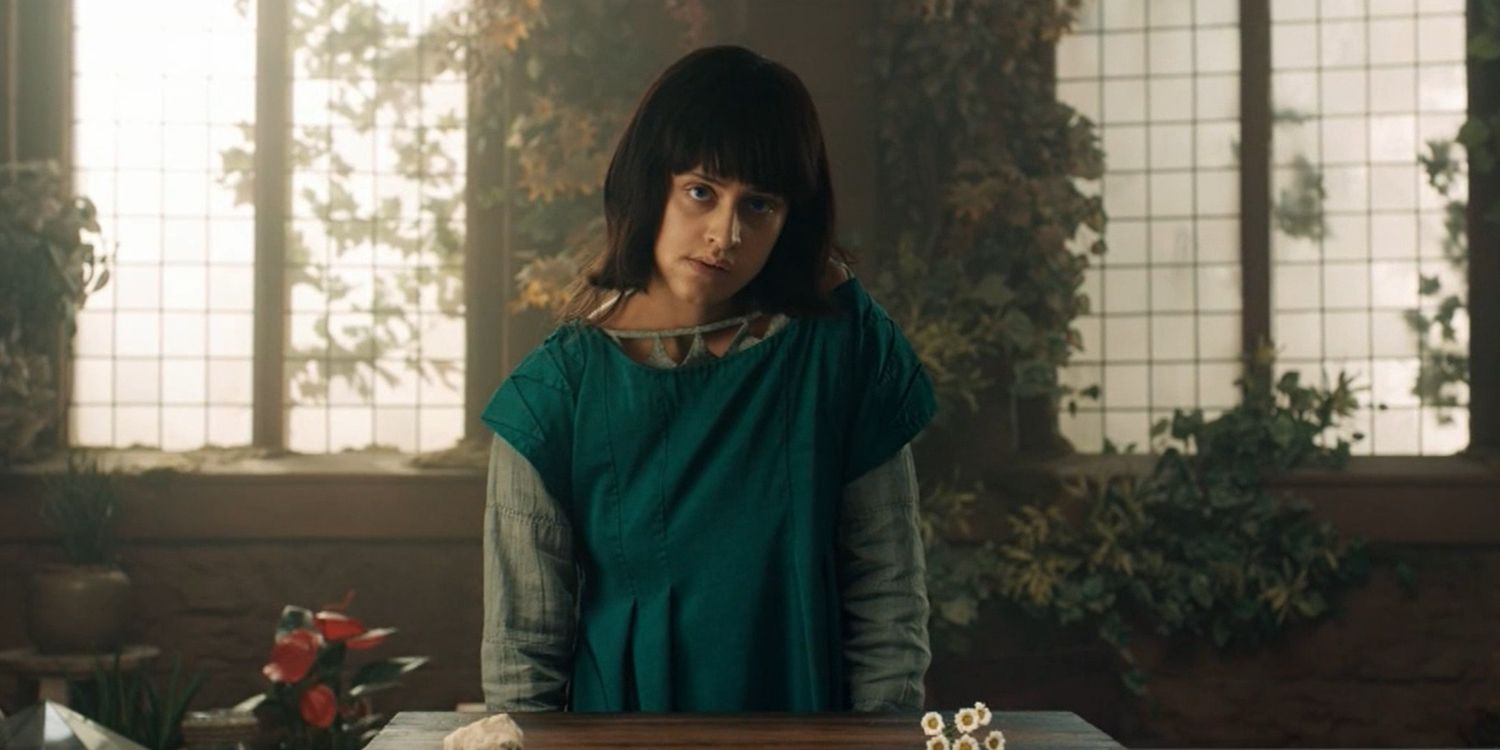Yennefer of Vengerberg is one of the most important characters in Netflix's The Witcher, and her origin story, powers, and original deformed look is something that opens up numerous questions. The Witcher series has launched fans into the deep end of the popular fantasy property, introducing most of its major players while offering up insight into their back story and how they fit into the world. The Witcher is certainly the kind of show that will entice fans to dig deeper into its lore, too, and one of the most intriguing characters - and complex - is Yennefer of Vengerberg, the powerful sorceress who is inextricably tied to both Geralt of Rivia and Ciri over the course of the first season.
The Witcher features complicated timeline hopping and a mythos that is incredibly deep to begin with, so it can be difficult to ascertain every detail of a character and how their story unfolds in the greater scheme of the narrative. Yennefer's story is even more bizarre than some of the show's weirdest elements, as her transformation and training make The Witcher's Law of Surprise look as simple as a parking ticket by comparison. By the time Yennefer is slinging spells on a battlefield, she's already undergone some transformation, both mentally and more obviously to her appearance, and her involvement only scales from there.
For fans who want to know everything there is to know about The Witcher's Yennefer of Vengerberg, they basically can - her character doesn't stray much at all from her representation in Andrzej Sapkowski's books. They also provide a little bit more detail about who Yennefer is and how she comes to be a beautiful and powerful sorceress. Obviously, there will be potential SPOILERS ahead, so fans looking to stay in the dark about The Witcher characters will want to tread carefully.
Yennefer's Origins In The Witcher Explained
Yennefer had a rough childhood thanks to being born with several physical deformities into a family that was not understanding about the limitations they caused for her. Her father immediately hated her and blamed Yennefer's mother for it, according to The Tower of the Swallow, and blamed her origin, as Yennefer is part-elf. In the Netflix version of The Witcher, Yennefer's real father is the source of her eleven lineage, but in the books, it's her mother. Either way, her mother does try to protect her during her childhood while her father eventually relegates her to menial tasks, remarking that she's "no daughter of mine" in The Witcher episode 2, "Four Marks".
Yennefer eventually awakens her abilities as a Source when she is being ridiculed and bullied by local villagers, who cause her to inadvertently teleport away, where she meets the mage Istredd. She is then discovered by Tissaia de Vries, a sorceress and the rectoress of Aretuza, a magical academy for young women. Tissaia buys her for four marks from her father, less than the price of a pig, and then takes her away to begin training as a sorceress.
Yennefer's Powers In The Witcher Explained
Yennefer, like all mages, draws her power from Chaos and must control them with her training. She is one of the more powerful sorceresses in the world, possessing a willingness to do whatever needs to be done to ensure victory in her endeavors, and she is also very cunning, although in the Netflix version of The Witcher most examples of Yennefer are from her younger and more inexperienced days. Although her time in Aretuza is originally characterized by struggles to control her power, she nevertheless shows a unique and natural adeptness at some of the more complicated variants of magic. Istredd, for instance, is baffled that she can summon a portal on her first try during their private training sessions, and Yennefer is also able to channel lightning through her own body rather than into the glass container Tissaia instructs the students to use.
Part of the reason that Yennefer is so powerful is because she is of elven blood. Elves in the world of The Witcher essentially "invented" magic as it is known in the world, later teaching it to humanity after the Conjunction of the Spheres. While humanity is best known for magic by the time The Witcher's narrative gets underway, elves remain powerful practitioners of the art of magic. Dandelion (Jaskier, in the Netflix series of The Witcher) later describes Yennefer's powers in Time of Contempt, thinking that her face is the face of "the goddess of vengeance, destruction and death." Needless to say, Yennefer is an incredibly powerful sorceress and the Netflix version of The Witcher only demonstrates parts of that unimaginable strength.
Yennefer's Look In The Witcher Explained
Obviously, the biggest difference fans will see in Yennefer as the Netflix version of The Witcher progresses is her appearance, which shifts dramatically. Yennefer is born with a hunchback and a misshapen jaw, and later, during her time at Aretuza, attempts to commit suicide on her first night, leaving her with deep scars on her wrist. Later, she appears with no physical deformities, and this is because she undergoes an enchanting ritual where a sorcerer uses her idealized image of the most powerful women in the world to reshape her into someone more beautiful - something that is done for sorceresses, at least partially, to be more appealing to the kings they will advise.
Yennefer's look doesn't come cheaply, however. She chooses to undergo the enchanting process without any of the necessary sedative herbs, which means she is conscious and able to feel every part of the procedure, which includes having her uterus magically removed and flames internally reshaping her skin and bones. Despite being chained down, the pain is so intense that Yennefer is able to summon the strength to break her restraints, indicating how awful the process is. Notably, Yennefer retains two of the qualities that people most often comment on her appearance about from her previous, natural aesthetic: her raven hair, which she complements with black clothing almost exclusively, and her violet eyes, which remain the same after her transformation.
Yennefer's appearance in The Witcher is also the driving reason for her character's involvement with djinns and other powerful but unstable forms of magic, like dragon organs. The cost for every sorceress who undergoes the procedure from the enchanter is their fertility, and Yennefer deeply regrets not being able to have a child later on. Yennefer's sterility is also one of the first qualities her and Geralt are able to bond over, as witchers are rendered sterile during their mutation process.
The Witcher is available to stream now on Netflix.




